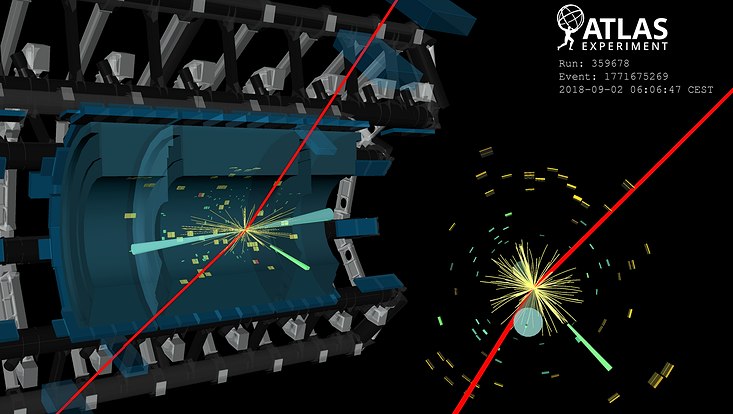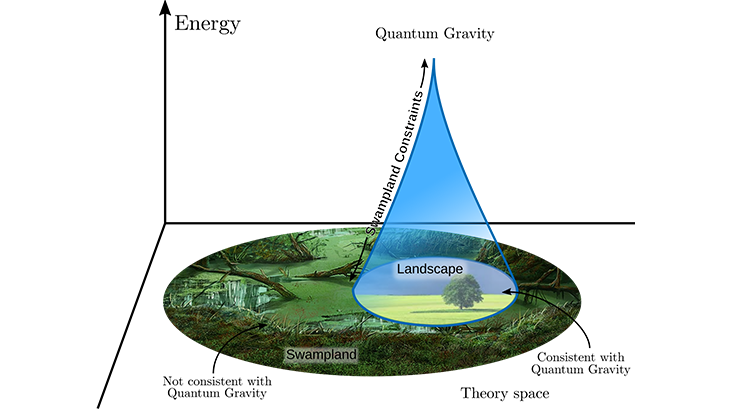Best Paper Awards 2023Happy birthday, Higgs boson!
18 April 2023

Photo: CERN ATLAS
July 4th 2022 marked the 10th birthday of the Higgs boson discovery. On this day in 2012 both the ATLAS and CMS experiment at the Large Hadron Collider (LHC) in Switzerland announced their observation of a new particle matching the profile of the Higgs boson in proton-proton collisions at the highest energies ever reached at that point. In the ATLAS collaboration, we celebrated the anniversary by publishing the most detailed and precise picture of Higgs-boson interactions so far. “It was a privilege and a lot of fun for my Quantum Universe colleagues and me to work on achieving this milestone with scientists from all over the world”, says Kunlin Ran, who was one of the coordinators of the data analysis team.
The Higgs boson is vital to our understanding of the nature of the universe down to its most fundamental level. Measuring the strength of interactions of the Higgs boson with other elementary particles helps us gain insight into the origins of mass and matter. In the anniversary paper, we combined a wealth of data from different measurements, to reach an unprecedented level of precision. A Higgs boson is produced in as few as about 1 out of a billion proton-proton collisions at the LHC (and not every Higgs boson event is experimentally accessible), so the fact that we measured this rate with a precision of 5% shows how powerful the combined dataset is.
We were also able to test the prediction that the strength of interaction between the Higgs boson and another particle depends on that particle’s mass – the smaller the mass, the less often such an interaction occurs. “Based on these results, we find that the way the Higgs boson behaves is remarkably consistent with predictions from theory”, explains Martina Ojeda, an early career researcher within the Quantum Universe cluster, "so if there are new phenomena out there, they are currently hiding out of our sight."
To understand how much space there is to hide still, we exploited the precision measurements of Higgs boson interactions with known particles, to derive indirect constraints on its potential interaction with new, so far unknown, particles. Such particles could for example be constituents of Dark Matter. "The indirect constraints derived in this paper complement the results from direct searches for such interactions and add yet another puzzle piece in our quest to unravel the mysteries of the universe.", says Petar Bokan, another Quantum Universe researcher who contributed to the Higgs boson precision measurements.
Despite having come a long way on our journey to understanding the Higgs boson, open questions remain – such as whether there may be other Higgs bosons out there, or what the exact nature of the associated Higgs potential is. We hope to find answers over the coming years, thanks to the ambitious measurement program planned by ATLAS with detector upgrades, improved analysis techniques and increased data collection rates all pushing precision levels even further. „There are exciting times to come, and Higgs boson measurements look to a bright future“, states Birgit Stapf, who also studies the prospects of Higgs boson measurements at future experiments for the Quantum Universe cluster.
Original Publication
Petar Bokan, Martina Ojeda, Kunlin Ran, and Birgit Stapf (Postdocs): A detailed map of Higgs boson interactions by the ATLAS experiment ten years after the discovery, Nature 607, 52–59 (2022).
The publication was awarded with the Best Paper Award 2023.


